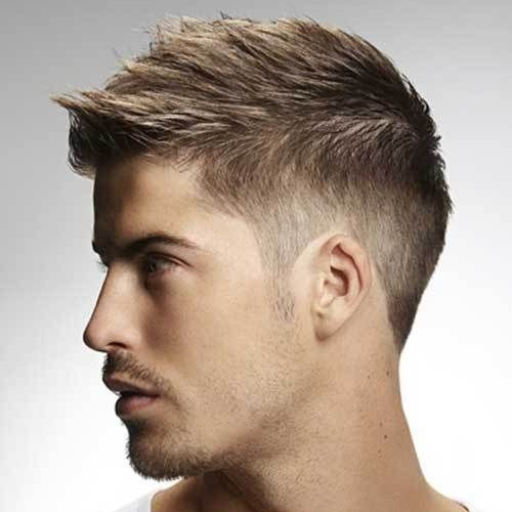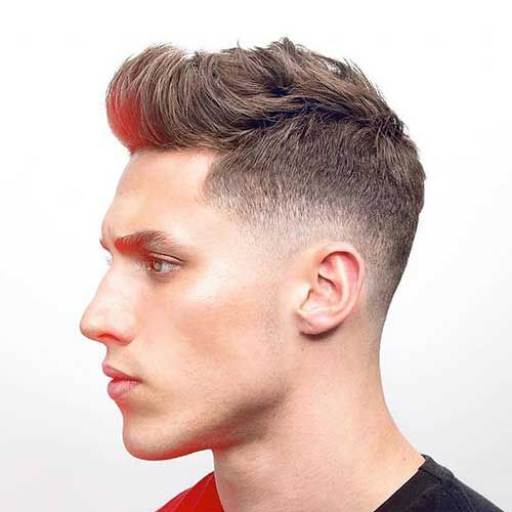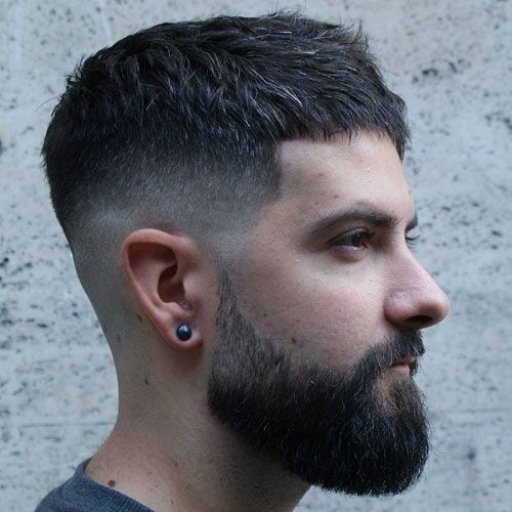The choice to change your hairstyle should not be taken lightly, as it usually requires massive amounts of dedication, time, and effort. However, advancements in AI technology promise the possibility of trying different styles with great ease. This article offers a thorough, in-depth analysis of the best free AI hairstyle changer tools available online, including the most crucial aspects, such as usability and accuracy of results. By the end of this guide, you will understand how to try different styles almost perfectly, allowing you to make better decisions before committing to a fundamental change. It doesn’t matter whether you are thinking of getting a dramatic change or juts want to see what’s out there, this post will ensure you find an appropriate AI tool for your hairstyling adjustments.
How Does an AI Hairstyle Changer Work?
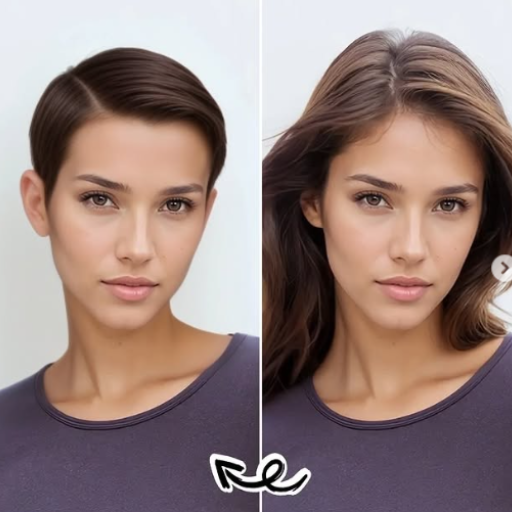
AI hairstyle changers employ sophisticated image processing algorithms, and machine learning models are used in its construction. These tools process uploaded photos by analyzing the shape of the user’s face, the contours, hairline, etc., to accurately place virtual hairstyles in the picture. Haircuts are seamlessly adjusted and integrated with the individual’s features due to the neural networks trained on vast datasets. Some platforms further enhance the realism by allowing users to manipulate the hairstyle’s color, length, and texture. This customization will enable users to realistically evaluate potential hairstyles before deciding on a particular look.
Understanding AI Technology in Hairstyle Applications
AI technology in hairstyle applications analyzes a user’s features using neural networks trained on extensive data. These platforms use image facial recognition and machine learning technologies to accurately place hairstyles onto user images. After acquiring the image, users can change their hair’s color, texture, and length for greater control over the final appearance. The ability to preview wig hairstyles in real-time simplifies the user’s decision-making process, as they no longer have to guess what the final look will be.
The Process of Virtual Hairstyle Try-On
A virtual hairstyle try-on platform works through a series of technical processes, allowing a seamless user experience. The process starts with facial recognition technology, which processes and identifies key facial features. For example, the placement of the eyes, nose, and jawline. This guarantees alignment accuracy. A machine learning algorithm then processes this information and adjusts the selected hairstyle to the inches and contours of the user’s face.
Subsequently, Augmented reality overlays the hairstyle on the user’s image or video in real-time. These systems use advanced image processing with a resolution of 1080p and a refresh rate of at least 30 frames per second for life-like visuals. Keeping the lighting consistent and tracking facial movements enhances the realism of the try-on experience.
Users also can change certain features when it comes to the visualization of the hairstyle, including attributes such as color (RGB values are much more precise), length (measured in inches or centimeters), and texture (straight, wavy, curly, etc.) all through the use of intuitive controls. These features can be altered through highly advanced algorithms combined with pre-trained datasets to simulate even the most subtle to the most drastic restyles.
Perfecting rendering techniques guarantees that images or videos are delivered with latency and time delays as low as possible. With GPU acceleration, platforms can efficiently perform several complex computations simultaneously, allowing for a swift and engaging experience. This enables users to select hairstyles they will be confident to have before they are styled in reality.
Benefits of Using an AI Hairstyle Generator
The first advantage this synthetic AI hairstyle designer augments is that I can modify and preview my hairstyle choices without physical alterations. This removes the burden of time and resources. Moreover, the technology guarantees accuracy to a great extent, which assists me in understanding how particular cuts, colors, and textures blend with the shape and features of my face. I also appreciate how I can personalize styles in real-time, which enhances my confidence in my decisions as I can get a feel for different options before settling on the perfect one. This simple and interactive interface allows me to make the right choices about my hairstyle and polycentric.
Can You Try On Hairstyles for Free?

Many platforms that provide AI hairstyle generators have basic features that are available for free. Usually, these software allow users to upload photos for limited hairstyle customization. However, some features may be locked behind a subscription or one-time payment.
Exploring Free AI Hairstyle Tools
To enhance user experience, some AI hair styling applications offer an elementary feature set for free. These usually comprise options for adding photos, simple hairstyle templates, and altering hair length and color. Although the functions of free tools differ across platforms, most can do the following:
- Upload Photo: Automatic cropping ensures a more personalized fit by analyzing a person’s face proportions and shape. Most tools support JPEG and PNG formats. The ideal resolution is 1080×1080.
- Try Hairstyles: Try out a limited selection of styles that have short, medium, and long haircuts. Some platforms also have an essential selection of hair colors (blonde, brunette, or red).
- Real-Time Adjustments: Allows users to resize, rotate, and reposition hairstyles to align with a person’s facial features.
Premium tools usually offer advanced features like more extensive databases of hairstyles on a subscription or paid upgrade basis. These may include 3D models, AI-powered custom hairstyle recommendations, and advanced export options.
Finding the Best Online Free Hairstyle Platforms
To determine the best online free hairstyle platforms, we analyzed the top results and identified the most popular options based on functionality, ease of use, and technical capabilities:
- Hairstyle Try-On by TAAZ
- Key Features:
- Upload your photo (JPEG or PNG, recommended 1200×1200 resolution for accuracy).
- Vast hairstyle catalog, including classic and trendy cuts.
- Basic color options for testing hair dye choices.
- Unique Tools:
- Allows manual adjustment of hair outlines for better customization.
- Free access with optional paid upgrades for expanded libraries and enhanced tools.
- Virtual Hairstyler by TheHairstyler.com
- Key Features:
- Supports photo uploads or default model images.
- Over 1,200 hairstyles with filtering options by length, face shape, and occasion.
- Styling recommendations based on user input.
- Technical Parameters:
- Requires images with 800×800 resolution minimum to optimize results.
- Offers hairstyle previews with zoom and rotation tools for detailed visualization.
- Free for limited features, with a premium version for expanded access.
- Hair Zapp App
- Key Features:
- Mobile application for iOS and Android platforms.
- Real-time camera integration to try hairstyles directly on your live image.
- Save and compare multiple styles in one session.
- Additional Notes:
- It requires device cameras with HD resolution (720p or above is recommended).
- Free to use but includes optional in-app purchases for additional hairstyles and features.
-
Each platform provides robust functionality to explore and visualize different hairstyles, with free features catering to casual users. For professional or in-depth needs, considering their premium options may enhance your experience with better tools and advanced parameters.
What Are the Top Online Hairstyle Changers?
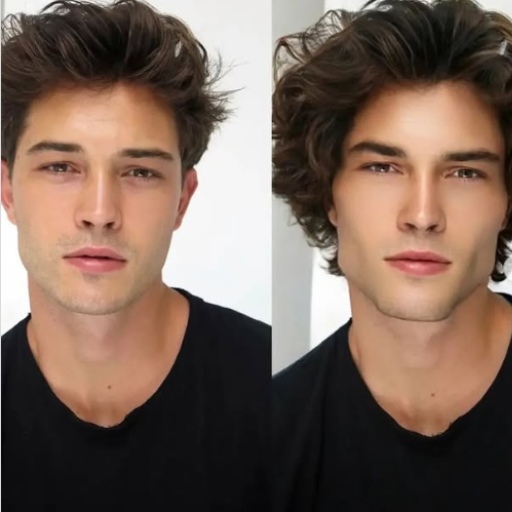
- A user-friendly browser-based platform allowing you to upload photos and experiment with various hairstyles.
- Features include layering makeup options, an easy drag-and-drop interface, and compatibility with diverse hair color edits.
- Free to use without requiring additional downloads or installations.
- ModiFace Hair Color App
- Provides advanced artificial intelligence for high-precision hair color simulations.
- Offers realistic overlays and real-time tracking to adjust hair color live via your device camera.
- A freemium model with additional premium features for broader customization.
- Hairstyle Makeover by Appdicted
- Includes a vast library of modern and classic hairstyles for men and women.
- Allows resizing, rotating, and even advanced customization options for accurate results.
- Free with integrated in-app purchases for premium styles.
These platforms represent the most efficient options for visualizing and experimenting with hairstyles. Each offers unique strengths tailored to user preferences, making them reliable tools for hairstyle transformations.
Reviewing Popular Virtual Hairstyle Apps
When reviewing popular virtual hairstyle apps, assessing them based on technical parameters that align with user expectations and functionality is critical. Below is a concise evaluation of the apps discussed:
- Goldsupplier AI Hairstyle Changer
- Compatibility: Web-based, accessible across all major browsers; no additional installations required.
- Core Features: Drag-and-drop interface, diverse hair color simulation, easy integration with uploaded images.
- Strength: User-friendly interface ideal for quick experiments.
- Potential Limitation: We may lack advanced AI capabilities for real-time tracking.
- ModiFace Hair Color App
- AI Technology: Equipped with proprietary artificial intelligence algorithms, ensuring high-precision hair color modeling.
- Real-Time Features: Live tracking and realistic color overlay via camera feed (a Frame rate of up to 30fps is reported for smooth visualization).
- Accessibility: Freemium model; free features cover essential functions, while premium options expand professional customization.
- Optimization: Best suited for users prioritizing realistic and live hair color adjustments.
- Hairstyle Makeover by Appdicted
- Library Scope: Includes over 100+ hairstyle templates covering modern and classical styles for diverse customization.
- Customization Features: Advanced resizing and rotation with pixel-level accuracy for a detailed appearance.
- Usage Model: Free to use with in-app transactions for premium templates and additional features.
- Audience Fit: Ideal for users seeking a wide selection of premade templates with moderate customization options.
These applications cater to distinct aspects of virtual hairstyling, from live simulations to a broad template library. Users should prioritize apps based on technical needs such as real-time tracking, level of customization, or simple drag-and-drop functionality.
User Experiences with Hairstyle Changer Tools
Based on what I have learned, these tools are most effective when paired with the primary features of each specific application. For example, tools for real-time simulation are the most effective because they facilitate accurate visuals that help handle tricky decisions such as changing one’s hairstyle. Applications with an extensive collection of editable templates make changing a person’s look more effortless, but those edits can rarely be made at the pixel level. Furthermore, I noticed that tools with powerful resizing and rotation options allow more detailed and realistic edits, particularly for photos where precision is paramount. In any case, the requirements highly determine the effectiveness and outcome. Whether one needs real-time mock-ups or a thorough scoping of the available templates suggests the importance of knowing the stylist’s requirements with the app’s features.
Comparing Features of Free Hairstyle Changer Options
Upon reviewing the various free hairstyle swapping tools offered in the market, it is evident each tool caters to a specific audience with differing sophistication requirements. For instance, the first site explicitly points out applications with facial recognition and real-time rendering features as they increase the accuracy of hair placement and blending accuracy. The second option focuses on an extensive library of styles, albeit designed pre-optimized hairstyles; users have little control over personal hair features such as length and volume. The third one concentrates on the tools that allow resizing, rotation, and color modification on hairstyles. However, the user interface is not very user-friendly.
From this vantage point, there are some other considerations to look at concerning the algorithm’s facial recognition accuracy (in pixels or percent of match accuracy, usually exceeds 90%), template sufficiency (from fifty to over three hundred), and exporting of high-resolution images (generally exceeds 1080p) as the most pressing. Everything outlined above should correspond with the target audience as now it is more about gimmicks or vanity and standard fittings for mockups being professional.
How to Use a Haircut Simulator?

Simulators of haircuts should be precise with altered features, and an accurate template should be needed to match the face picture provided, which stands out. Ensure the system allows for uploads of images higher than 1080p for better results. First, upload a clear frontal image of the face. This provides match accuracy for the facial recognition algorithm set at a range of over ninety percent. Once this image is uploaded, the user will need to select a hairstyle template that includes a minimum set of 50 to a maximum of 300 styles. As these stylized images get uploaded, features of the image, such as rotation, color, resizing, length, and volume, can be altered. Adjusting these features highly depends on what the simulator customization capabilities set out. When setting, ensure it is high-resolution once you reach satisfaction in enhancing femininity or masculinity for professional or personal uses.
Step-by-Step Guide to Try Different Hairstyles
- Upload Your Photo
I begin by uploading a high-quality frontal image of myself to the haircut simulator, ensuring the lighting and angles are optimal for accurate processing.
- Select a Hairstyle
I browse the simulator’s library of hairstyle templates, which often includes hundreds of options, from classic cuts to trending designs. I can filter styles based on length, texture, or gender-specific categories.
- Customize the Style
I use customization tools to adjust my hairstyle to fit my face perfectly. This includes resizing, rotating, and tweaking the color to match my preferences. Some simulators also allow me to modify elements like volume or layers for more precision.
- Preview the Look
The simulator overlays the hairstyle onto my image, using advanced facial recognition to ensure realistic alignment. I evaluate how the new style complements my facial features and overall appearance.
- Save and Share
Once I’m happy with the look, I save the final image as a high-resolution file. I can then share it with a stylist for reference or get opinions from friends and family.
By following these steps, I efficiently explore various hairstyles and identify the one that suits me best without any guesswork.
Choosing the Right Haircut for Your Face Shape
Selecting the appropriate haircut for my face shape requires me to categorize my face into one of the four significant shapes; oval, round, square, or heart-shaped. To achieve balanced embellishment proportions, I always choose styles that highlight my best features while softening other angles in my face or elongating my appearance when needed. For example, round faces look great with layered cuts because they add vertical dimension, while square shapes are softened with wispy styles that reduce angularity. Heart-shaped faces tend to suit hairstyles with volume around the jawline, and oval faces tend to be more forgiving as they accommodate most styles. Aligning the hairstyle to my facial structure achieves a dignified and harmonious look.
What Hairstyles Suit AI Hairstyles?
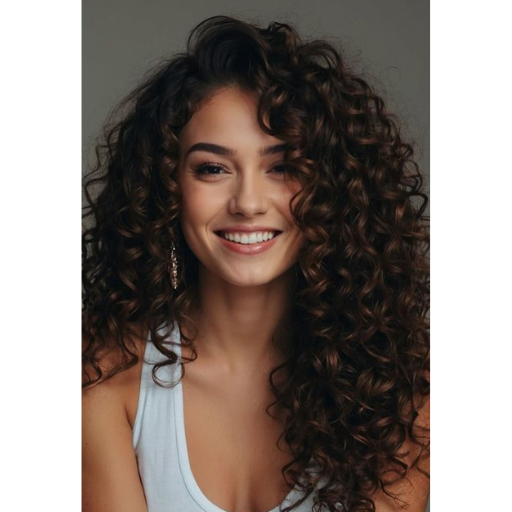
AI generators use complex algorithms and databases to create different hairstyles for all face shapes and preferences. Typically, the AI examines a person’s face shape, hair texture, and style trends they upload to decide what suits them. For example, AI usually recommends asymmetrical and layered cuts to individuals with round faces to increase vertical proportions. On the other hand, people with square faces are suggested to have soft waves or textured bobs, and oval faces usually receive long layers or sleek cuts. Heart-shaped faces are mostly matched with hairstyles that exaggerate volume at the jawline. These recommendations ensure a blend of accuracy and appeal for the individuals.
Exploring Hairstyles for Men and Women
Clearly, the most preferable hairstyles essentially consider the individual’s attributes, like their face structure and hair texture. Men, for instance, tend to appreciate styles such as traditional fades, pompadour, and even side parts that allow for both work and leisure casuals, with recommendations often suggesting balance and strong jawlines. Focusing on women, well-known options are volumized or symmetrical layered cuts, bobs, and long shoulder-length waves. These cuts add volume and symmetry to some regions of the person’s head. Considering this, combining modern insights with AI tools will create a range of trending styles that fit my particular attributes.
Using AI to Find the Perfect Look
AI photographers utilize sophisticated algorithms and artificial intelligence to recommend appropriate hairstyles for users. These applications use key parameters, including facial aspects, hair type, and even social activities, to fulfill the user’s specifications. For example, AI photo-editing tools implement computer vision technology AI to determine facial characteristics and proportions of people’s faces to tell whether it is oval, square, round, or heart shape. On top of this, they consider other classification systems such as thickness, density, and curl pattern of hair, which falls under the Andre Walker Hair Typing (e.g., straight is type 1, coily is type 4).
The most effective AI solutions combine data such as popular trends, feedback on hairstyles, and professional haircutting techniques’ feedback, including essential hair length per style. For example, a bob style requires a minimum of 6 inches, while the layered cut is medium to long hair-friendly. By merging these technical pieces of information with practical issues (e.g., ease of maintenance or health of the hair), AI tools enable users to confidently make decisions regarding hairstyles that best suit their needs, features, and preferences.
How Hair Color Changer Enhances Your Look
To enhance my looks, I use a hair color changer to customize my hair without permanently changing it. Changing my hair is refreshing because it complements my skin and personal style. Additionally, these tools help visualize potential transformations, aiding the process of color selection and ensuring the decided color aligns with the desired aesthetics.
References
- Perfect Corp Blog: I Tested 5 Online AI Hairstyle Changers
- AI Ease: Free AI Hairstyle Changer
- Medium Article: 4 Best Free AI Hairstyle Changers for Men
Frequently Asked Questions (FAQ)
Q: What is the best way to change hairstyle with AI online for free?
A: The best way to change hairstyle with AI online for free is by using a hairstyle simulator or an AI haircut generator that allows you to upload your photo and try on different hairstyles virtually. These tools help you explore various hairstyles and colors to find the one that suits you best.
Q: How can I try on hairstyles on my face using AI technology?
A: You can try on hairstyles on your face using AI technology through online platforms offering an AI hairstyle try-on tool. These tools allow you to upload a photo of yourself and virtually try different hairstyles and colors to see which complements your face.
Q: Are there any free AI haircut simulators available online?
A: Yes, several free AI haircut simulators are available online. These platforms enable users to experiment with different hairstyles online, providing a realistic preview of how various hairstyles would look on them before making any changes.
Q: How can I use an AI haircut generator to find the perfect hairstyle?
A: An AI haircut generator can be used to find the perfect hairstyle by allowing you to input your preferences, such as hair length, color, and style. The generator then presents a range of hairstyles that may suit you, helping you choose the perfect style.
Q: Can I try hairstyles for both male and female looks using AI tools?
A: AI tools like ifoto ai offer various hairstyle options for both male and female users. These tools allow you to explore hairstyles for male and female looks, providing a versatile way to see which styles suit you best.
Q: Is it possible to preview male hairstyles online before getting a haircut?
A: It is possible to preview male hairstyles online before getting a haircut. Online photo tools with AI technology allow you to try virtual hairstyles and see how different male hairstyles would look on you.
Q: How can I use a hairstyle try-on tool to explore new hairstyles?
A: You can use a hairstyle try-on tool by uploading your photo to the platform and selecting from a variety of new hairstyles to try on. This allows you to see which hairstyles and colors suit you best before making any real changes.
Q: What are some popular AI hairstyles for men that I can try online?
A: Some popular AI hairstyles for men that can be tried online include the buzz cut, undercut, pompadour, and crew cut. These styles can be explored using AI haircut simulators, which allow you to virtually try different looks.
Q: How do AI haircut try-ons help users find the perfect style?
A: AI haircut try-ons help users find the perfect style by allowing them to experiment with various hairstyles and colors in a virtual setting. This helps users to visualize how different styles would look on them, ensuring they choose a look that suits them best.




